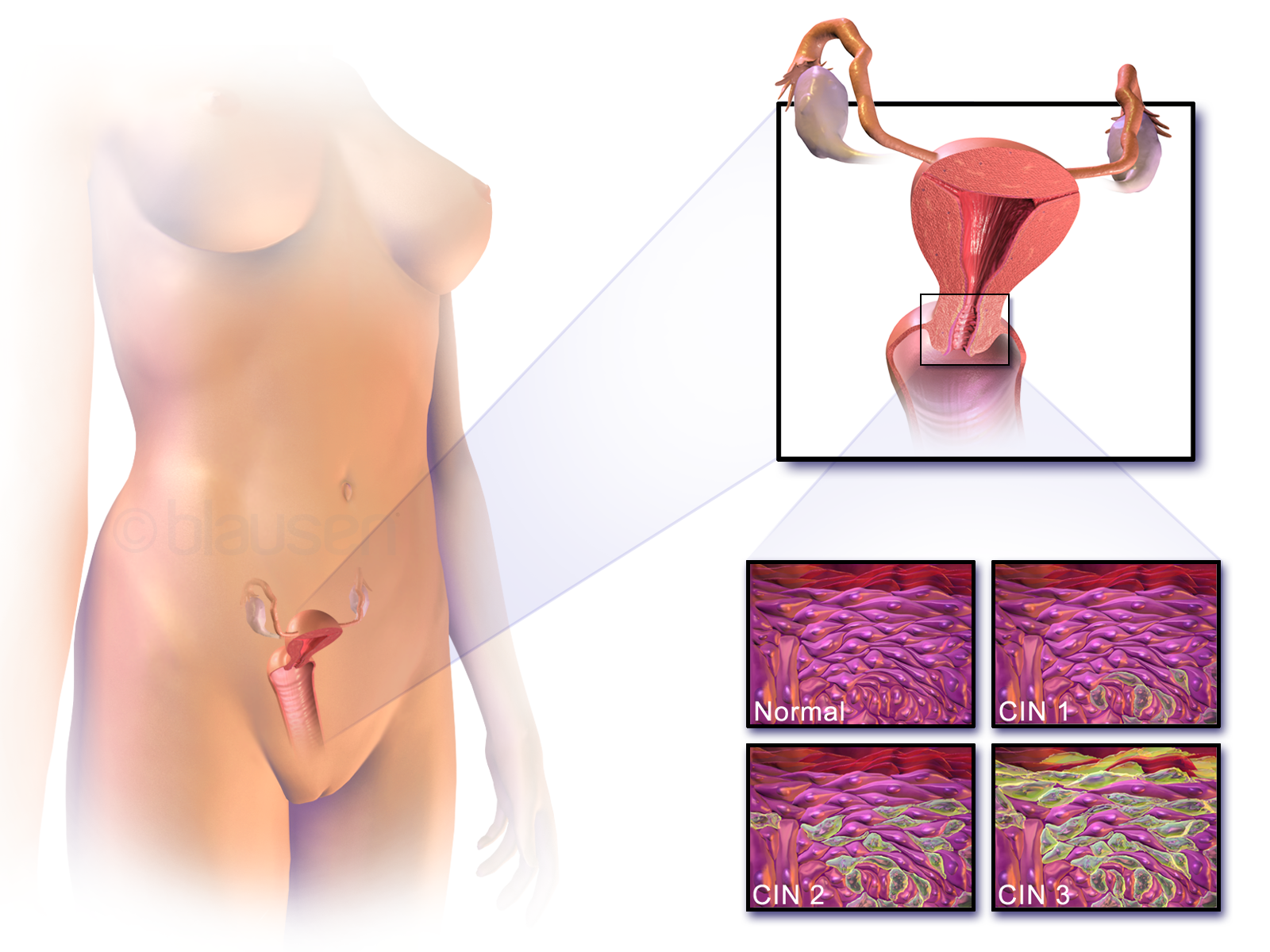Cervical Cancer
Cervical cancer occurs in the cells of the cervix, which connects the uterus to the vagina. Early stages often present no symptoms, making regular screenings crucial for early detection and successful treatment.
Signs and Symptoms of Cervical Cancer
-
Abnormal vaginal bleeding, such as between periods or after menopause
-
Unusual vaginal discharge
-
Pelvic pain or pain during intercourse
Types of Cervical Cancer
Cervical cancer can be categorized into two main types:
-
Squamous cell carcinoma: The most common type, originating in the squamous cells lining the cervix.
-
Adenocarcinoma: Begins in the glandular cells that produce mucus in the cervix.
When to Consult a Doctor
If you experience any of the symptoms mentioned above or have an abnormal Pap test result, it's important to consult a doctor promptly. Early detection is key to successful treatment.
Causes
Human papillomavirus (HPV) infection is the primary cause of cervical cancer. However, not all HPV infections lead to cancer, as the body's immune system often clears the virus naturally.
Risk Factors Involved in Cervical Cancer
-
HPV infection: The most significant risk factor for cervical cancer.
-
Smoking: Increases the risk of cervical and other cancers.
-
Immunosuppression: A weakened immune system, such as from HIV, can increase the risk.
-
Long-term use of birth control pills: May slightly increase the risk of cervical cancer.
Cervical Cancer Diagnosis
Diagnosis typically involves:
-
Pap test (Pap smear): Screening test to detect precancerous or cancerous cells on the cervix.
-
HPV DNA test: Identifies high-risk types of HPV that are most likely to lead to cervical cancer.
-
Colposcopy: A procedure to closely examine the cervix for abnormal cells.
-
Biopsy: Removal of a small tissue sample for further examination under a microscope.
Stages of Cervical Cancer
Cervical cancer stages range from 0 to 4:
Stage 0: Precancerous cells are present on the surface of the cervix.
Stage 1: Cancer is limited to the cervix.
Stage 2: Cancer has spread beyond the cervix to the upper part of the vagina or tissues around the uterus.
Stage 3: Cancer has spread to the lower part of the vagina, pelvic wall, or has caused kidney problems.
Stage 4: Cancer has spread to distant organs, such as the bladder, rectum, or lungs.
Treatment of Cervical Cancer
Surgical Intervention
Surgery is often the primary treatment option and may include:
-
Hysterectomy: Removal of the uterus and cervix, often recommended in early stages.
-
Trachelectomy: Removal of the cervix while preserving the uterus, an option for women who wish to maintain fertility.
Radiation Therapy
-
Radiation therapy: Often combined with chemotherapy to treat advanced stages or reduce the risk of recurrence.
Systemic Treatments
-
Chemotherapy, targeted therapy, and immunotherapy can be used to treat cervical cancer, especially in advanced stages.
Palliative Care
-
Palliative care focuses on improving quality of life by managing symptoms and side effects.
Prognosis
The prognosis for cervical cancer depends on the stage at diagnosis, the patient’s overall health, and how well the cancer responds to treatment. Early detection and treatment are key to improving outcomes.
Cervical Cancer Doctor In Rajinder Nagar,
Rajendra Place,
Karol Bagh,
Patel Nagar,
Kirti Nagar,
Moti Nagar,
Jhandewalan,
Shadipur,
Shastri Nagar,
Paharganj.
for more details please contact us at +919818826423.
-
Cervical Cancer Doctor in Rajinder Nagar
-
Cervical Cancer Doctor in Rajendra Place
-
Cervical Cancer Doctor in Karol Bagh
-
Cervical Cancer Doctor in Patel Nagar
-
Cervical Cancer Doctor in Kirti Nagar
-
Cervical Cancer Doctor in Moti Nagar
-
Cervical Cancer Doctor in Jhandewalan
-
Cervical Cancer Doctor in Shadipur
-
Cervical Cancer Doctor in Shastri Nagar
-
Cervical Cancer Doctor in Paharganj
